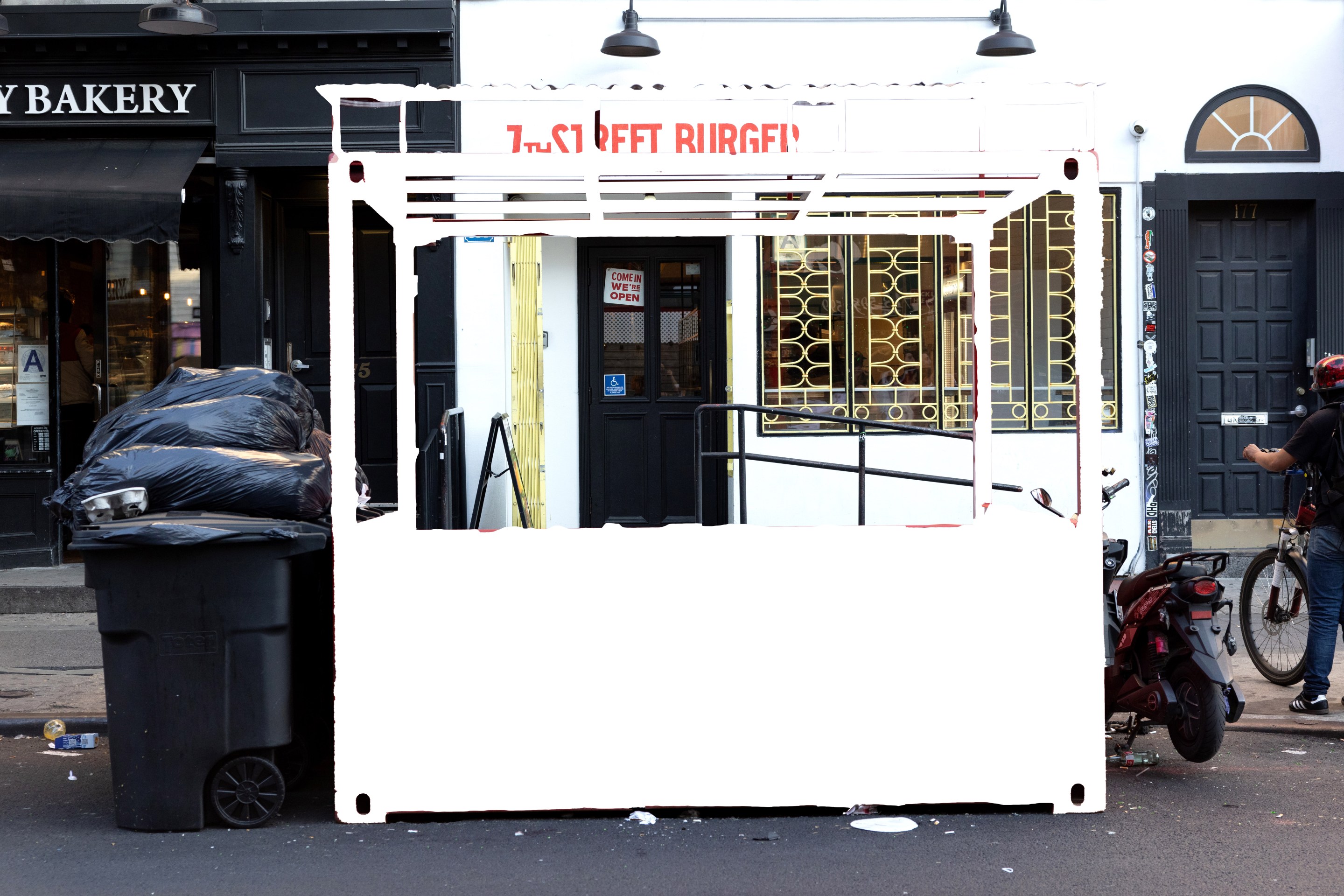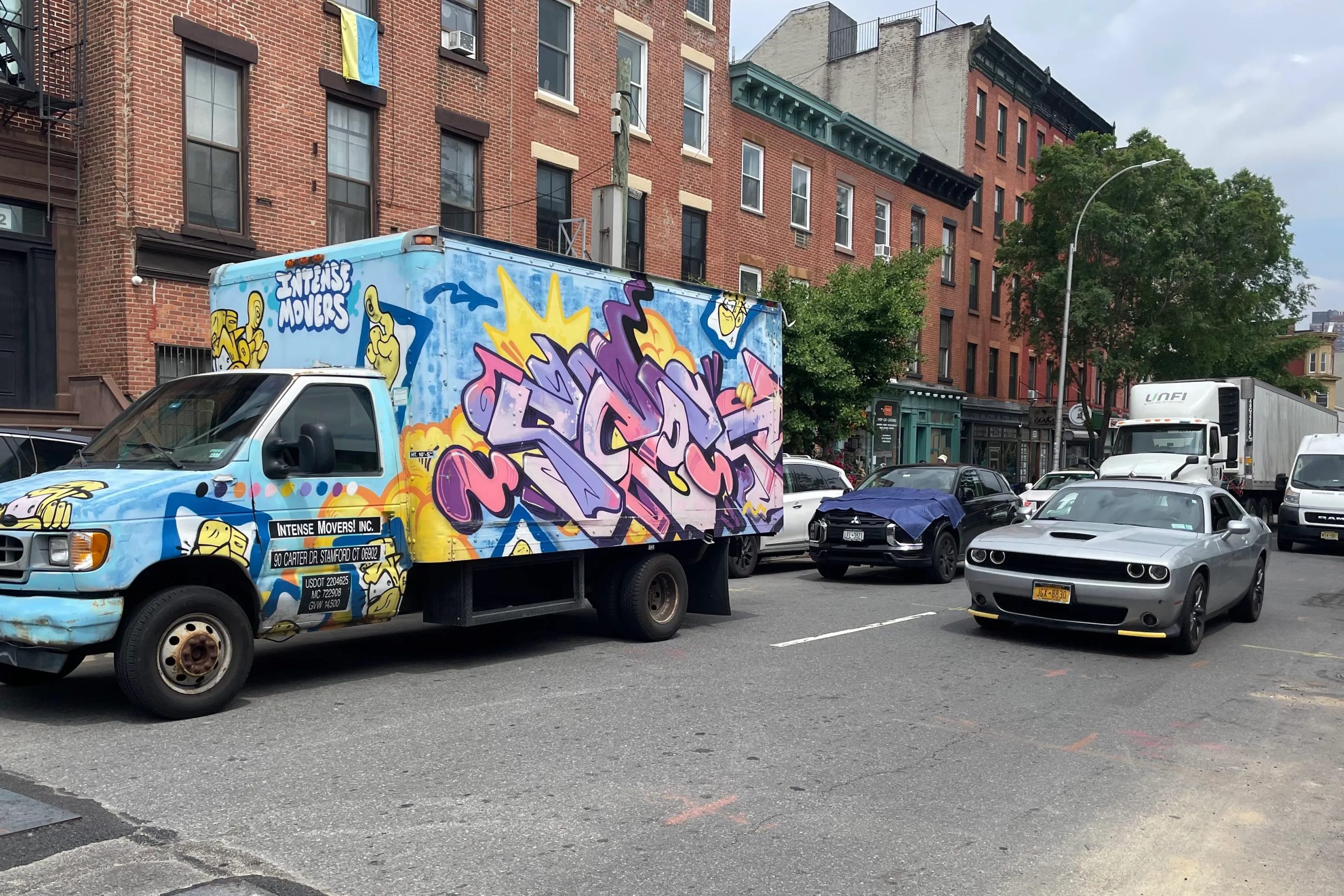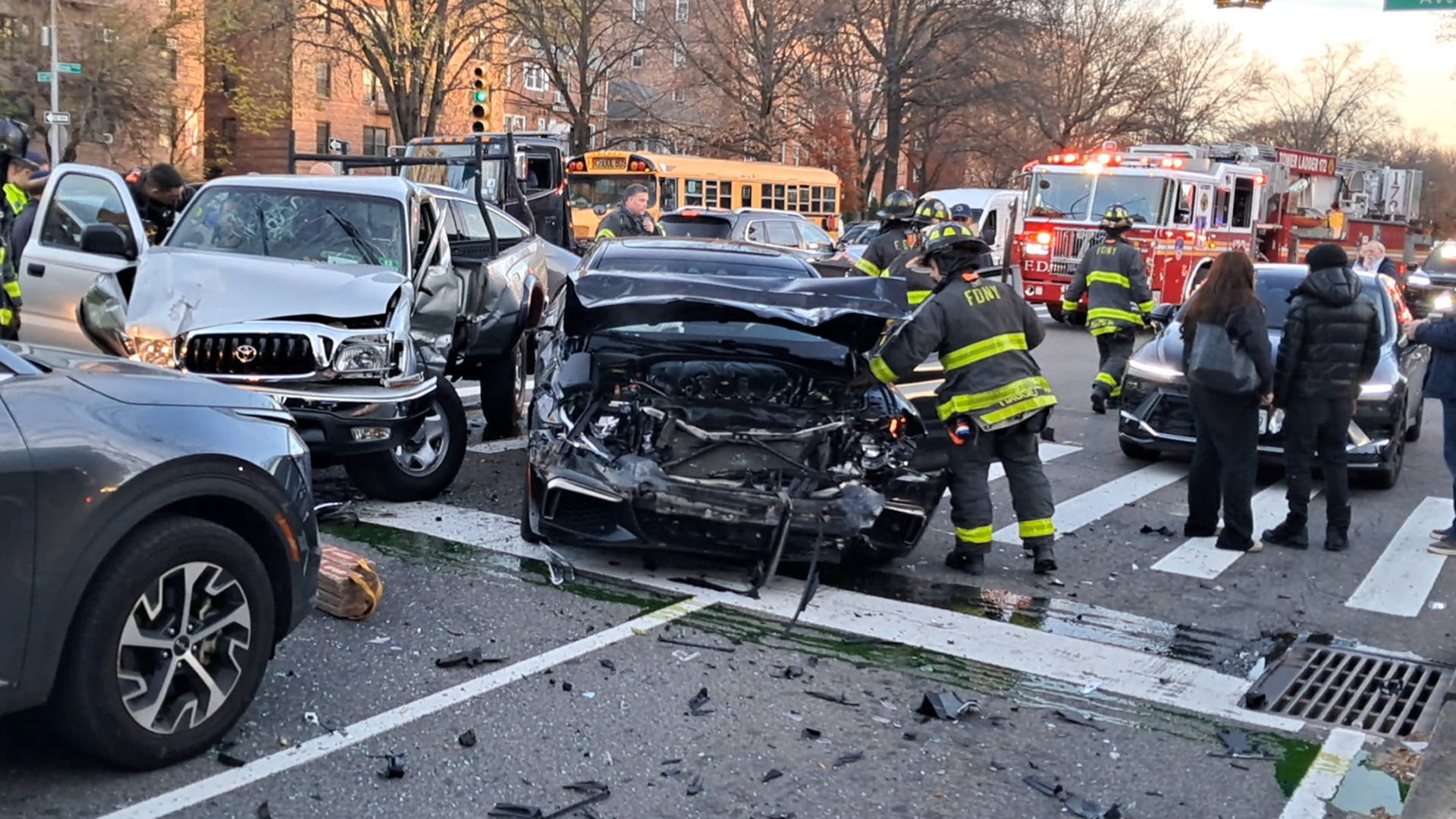This post is #14 in the Sightline series, Parking? Lots! Alan Durning is the executive director of Sightline.
There are places in this world the savvy traveler would never drive with any hope of finding street parking: Fisherman’s Wharf in San Francisco, for example, or just about anywhere in downtown Los Angeles.
That’s what you might think, anyway. If you actually drive to Fisherman's Wharf today, though, you will have no problem finding a curb spot. A space will offer itself on each nearby block, if you’re willing to pay for it. The same goes for downtown LA.
These two cities plus Washington, DC, and a handful of others are experimenting with an approach to parking called "performance pricing." Rather than dictating a flat meter rate citywide, their councils have set a performance goal: one or two empty spaces per block. They’ve instructed parking functionaries to charge what people are willing to pay, to use information technology to nudge meter rates up or down so that whatever block we citizens drive to, there will always be -- with apologies to West Side Story lyricist Stephen Sondheim -- a place for us.
The goal of this new philosophy is to untangle the snare of economic weirdness that afflicts curb parking. Charging the right prices ends the epidemic of cruising for parking and the resulting ills. It allocates street spaces in ways that help neighborhoods, favoring carpoolers, for example, who can divide the cost of a curb space among themselves. This brings more customers per slot. Performance pricing also tilts toward short-term visitors who will turn over the space quickly: buyers, not window shoppers; diners, not waiters. In contrast, long-term parkers and people driving alone are likely to park elsewhere or arrive by transit, bike, or foot.
Yet performance pricing reaches further still. Parking politics is a Gordian Knot: visceral territoriality about free or underpriced curb parking, intense political pressure for abundant off-street parking quotas, and a resulting cascade of absurd and pernicious consequences---consequences that make parking quotas a hidden bane of cities. Performance pricing is the first of three essential steps for cutting the knot. (The second and third will be the topics of the next articles.)
A Time and Place for Us
San Francisco’s performance pricing pilot SFPark, the world’s most advanced, is illustrative. The city won an $18 million federal grant to install hockey-puck-sized, in-street sensors under 7,000 curb spaces -- one quarter of its metered slots. It also upgraded to smart parking meters that feed data to the city. Car navigation systems and parking apps, including the city’s own SFPark, tap it and inform would-be parkers.
The data feed and the smart meters have let the San Francisco Municipal Transportation Authority adjust rates remotely, block by block, every six weeks since April 2011. Prices range from 25¢ to $6 an hour on normal days, and adjustments come in increments of no more than 25¢ upward or 50¢ downward per period.

SFMTA also eliminated most parking time limits or raised them to a generous four hours in SFPark areas. The point of time limits is to encourage turnover; unfortunately, they are a crude tool -- hard to enforce and easy to game. Employees in many neighborhoods, for example, swap spaces during their coffee breaks. Performance pricing guarantees slots on each block, pre-empts gaming, and ensures turnover more effectively. People leave their cars only as long as they’re willing to pay.
San Francisco is famous for mobbed parking, so you might expect the pilot to have jacked up meters everywhere. Instead, rates have dropped as many places as they’ve risen. In the first year, one third of rates went up, one third went down, and one third stayed the same, according to UCLA planning professor Donald Shoup and his coauthor Gregory Pierce, who have studied SFPark.
Every neighborhood turned out to have pockets of crowding and of relative plenty, so rates on individual blocks rose and fell in each part of town. Furthermore, occupancy proved low in the mornings, so SFMTA began to give matinee discounts for earlier hours. Performance pricing has redistributed cars organically as drivers followed their pocketbooks to less-crowded blocks, less-crowded times, and less-expensive travel options.
SFPark is still young, but so far, it’s been an unconditional success. The technology is working. People are using the apps. Drivers are no longer circling the block endlessly. Perhaps most revealing, San Francisco’s notoriously outspoken citizens have had shockingly little to say. Jay Primus, who manages SFPark, reports receiving “almost zero complaints.”
Half Way There
In Cascadia, performance pricing has so far appeared only in Seattle. In 2010, the city council and mayor overhauled meter policy citywide. Henceforth, the Seattle Department of Transportation (SDOT) -- not elected leaders -- would control meter rates between $1 and $4 an hour.
SDOT has since pursued San Francisco’s plan at 12,500 spaces, every metered slot in town. The long-term potential is enormous. Unfortunately, Seattle is doing performance pricing on the cheap, with a crude, low-tech strategy that lags behind SFPark in four ways.
- Seattle’s performance pricing is imprecise across space. The city does not have in-ground sensors, so SDOT sends workers to count empty spaces once a year, most recently in Spring 2013. Such surveys generate data inadequate for tuning parking rates on each block, so SDOT is adjusting them in whole neighborhoods. Compare SDOT’s 29 meter districts with SFPark’s almost 1,000 separately priced block faces. In the City by the Bay, block-to-block differences proved a cure for cruising, but Seattle’s program cannot seize that benefit.
- The Seattle program is imprecise across time. SDOT replaced every coin-operated meter in the city with pay-and-display pay stations between 2004 and 2010. Unfortunately, because it was an early adopter, it’s stuck with many early generation pay stations that tend to crash when reprogrammed remotely. As a result, someone has to go to every station -- all 2,100 of them -- and type in new instructions. As a result, SDOT adjusts meters only once a year.
- Seattle’s program has been slow to lift time limits. Its biggest relaxation of limits was to switch from two to three hours after 5 p.m. (Meters stop running at 8 p.m.) It has also been slow to offer matinee parking rates, even though morning occupancy rates are low.
- SDOT’s top rate is too low. Seattle’s rate cap of $4 is a third lower than San Francisco’s $6 peak, and it’s lower than the hourly rates in many downtown garages, so performance pricing in downtown Seattle is not yet hitting its potential. Downtown Seattle has about 5,000 curb spaces priced at $4 an hour, plus about 60,000 private spaces, priced according to a variety of schemes that range up to $14 an hour. In this map from Spring 2013, blocks that are red are full; other colors are less than full. The goal is that they should all be orange.
Still, performance pricing is working better than nothing in Seattle. On Sundays (shown below), when SDOT does not charge for curb parking, almost the entire map is red. On Sundays, people cruise for parking.
If performance pricing is a good idea Monday through Saturday, it’s also a good idea on Sunday, a fact San Francisco recognized early in 2013 by extending meter operation seven days. What’s more, if it’s a good idea before 8 p.m., it’s a good idea after 8 p.m. Seattle’s parking surveys show crowding peaks in many neighborhoods in the evenings. In parts of San Francisco, meters now run until 11 pm, and in Pasadena, some run until midnight.
Despite the ways Seattle trails San Francisco, the Emerald City’s program is impressive. Its tools are crude, but it has kept spaces more available in more neighborhoods than ever. And it’s done so without hiking meters overall: Rates have gone down in more neighborhoods than they’ve gone up. In the years ahead, Seattle could invest in catching up to SFPark. Matching San Francisco’s $18 million investment may sound expensive, but it’s less than a quarter of what the city spent on the Pacific Place downtown parking garage in 1998. It’s about a third of the city’s annual revenue from meters and parking tickets. It’s less than 1 percent of what Washington is spending to excavate an expressway under downtown Seattle.
No other Cascadian city has yet adopted performance pricing as policy. Portland, for example, has flat parking rates in its four major parking districts, and downtown metered parking costs just $1.60 an hour. Vancouver, BC, however, does practice an ad hoc version of performance pricing. It prices meters block by block in rough approximation of demand.
Somewhere
Performance pricing’s benefits to metered neighborhoods are welcome, but those locales are islands in an ocean of free parking. In Seattle, 97.5 percent of street spots are free, and free parking dominates the map (below) of Portland. In the Vancouver, BC, metropolitan area, 13 of 22 municipalities lack even one meter, and most of the remainder have just handfuls. In Oregon and Washington, fewer than two dozen cities and towns have any meters at all. Overall, the metered share of Cascadia’s curb spaces is probably no more than 1 percent.
The potential of performance pricing lies in extending pricing to more of the remaining 99 percent. Doing so would not only better allocate spots among parkers, it would begin to solve parking’s two larger problems: huge but hidden costs and ghastly spillover effects.
In the last decade, Seattle has started charging at about 4,500 additional curb spaces, and a few other cities have also expanded pay parking. Some smaller cities, however, have gone the other direction. Yakima, Washington, and Coquitlam, BC, for example, have removed most of their meters.

Increasing the pay-parking share depends on a political change that I’ll discuss in the next article, but it also depends on changing how cities charge for parking. They need a method that is easier on their budgets than meters. Metering, after all, is expensive: SFPark cost on the order of $1,000 per space for meters, sensors, software, database systems, and tech support. Only in congested neighborhoods do such investments pay for themselves.
What cities can do instead is assess modest fees for parking permits, akin to the stickers already issued in many Northwest cities for resident-only parking districts. Thanks to the advent of pay-by-phone technology and license-plate reading enforcement scanners, a simplified form of performance pricing can work everywhere in town.
I’ll Take You There
To see how this idea would work, let’s start with a specific proposal. In 2012, University of Washington architecture professor Rick Mohler suggested in the journal Column 5 that Seattle sell annual on-street parking passes to everyone who regularly parks in the city’s half-million curb spaces. He suggested a permit priced at about 50¢ a day for on-street parking in unmetered spaces.
Cities across Cascadia could require similar permits. They might be sold by the day for visitors or by the month or year for residents. With current technology, in fact, buyers could select any end date they wanted.
The permits might exclude certain neighborhoods -- places where street parking is crowded and resident-only districts are currently in force. To park in these neighborhoods, you might need to buy a premium pass at a higher price, maybe $2 a day. Residents, meanwhile, might be exempt from the premium pass in their home zones, as a concession to parking territoriality.
Some cities might go farther and create additional levels of permits, each with its own price and parking privileges, just as ski resorts offer a variety of season passes and packages -- from budget versions that exclude peak days and popular lifts to gold-plated, unrestricted passes that cover multiple resorts.
All of the practical tools for implementing this vision are available. Automatic tolling systems, such as Washington’s Good to Go Pass and British Columbia’s TReO and Quick Pass, are already handling millions of transactions without slowing traffic. In some jurisdictions, such systems employ license-plate scanners, as do a growing number of cities’ parking enforcers, including Vancouver and Surrey, BC.
In these places, devices mounted on enforcement scooters scan parked vehicles’ plates at up to 30 miles per hour and alert officers to parked cars for which no one has paid the parking charge. Extending the system to unmetered parking, by sweeping streets overnight, for example, would provide enforcement for citywide parking passes.

Ultimately, such technology will allow fine-grained systems of performance pricing. Imagine a neighborhood adjoining a parking magnet such as the state capitol in Olympia, Washington. There, residents might get their passes for a low daily rate, but nonresidents might need to pay different amounts for different blocks. The city might limit the number of nonresident passes per block or simply set the price to outsiders based on occupancy. Streets where enforcement scanners consistently find no empty spaces would see rates for nonresident rise; streets with empty stalls would see them fall. Meter-less block-by-block parking charges may not arrive immediately, but, as Sondheim says, “Someday!” It's easy to imagine parking districts getting subdivided repeatedly until cities would have something like SFPark even in unmetered neighborhoods.
Back-up systems, for those who lack credit cards or internet, are no problem. Gas stations and various public offices sell automatic tolling passes and could sell parking permits too. Already, though, more than 80 percent of Seattle meter revenue is from plastic, and the advent of PayByPhone may raise that share.
A New Way of Living
Restricted parking zones are nothing new in Cascadia. Seattle has 32 of them, covering neighborhoods that likely hold more than 10,000 curb spaces. They surround major destinations such as universities, hospitals, and light-rail stations, and the city charges to park in them -- though it charges less than 10¢ a day. Portland has 10 restricted parking districts encircling downtown, and Bellevue, Washington, has another 15. Vancouver, BC, has a plethora, and Olympia and Victoria have them around their capitol buildings.
Almost no Northwest cities have yet begun selling access to these districts to outsiders but other places have, as UCLA’s Donald Shoup describes in The High Cost of Free Parking (see page 451). Aspen, Colorado, for example, charges nonresidents $5 a day to park in its permit districts. It gives local businesses one permit each and charges $1.70 a day for extra ones. Boulder, Colorado, charges residents only 3¢ a day for neighborhood permits but sells the permits to outsiders, restricted to particular blocks, for 89¢ a day. In Tucson, meanwhile, residents near the University of Arizona pay less than 1¢ a day to park on the street in their neighborhoods, but nonresidents pay up to $1.15 a day, depending on which block.
No place in Cascadia has extended a parking district citywide yet, but some cities do offer parking permits to all city residents for use in public facilities. Richmond, BC, for example, allows unlimited on-street parking to holders of a pass that costs $1.66 a day. Coquitlam and White Rock, BC, sell decals for use in public lots.
Someday

As this discussion illustrates, existing programs are piecemeal and rudimentary. They are outgrowths of parking territoriality. Still, they hold the seeds of what Tony called, when singing to Maria, “a new way of living” -- or, at least, of parking: one in which we pay to store our cars on public streets in rough proportion to the market value of that storage.
Thanks to information technology, this new way of parking is becoming eminently practical. And the upsides are huge: an end to cruising for parking; better allocation of parking spaces to car-poolers, shoppers, and diners; and the gradual shift of the gargantuan cost of parking from everyone else to the people choosing to use that parking. Transferring that cost from society at large onto parking itself will boost driving alternatives, trim oil use, make streets safer, and help move us beyond carbon.
Before we can claim those benefits, however, we have one colossal obstacle. We have to overcome potent and venomous opposition to the idea from many people. Voters, after all, seem to get almost as exercised at the thought of having to pay for what was previously free as they get when people park in “their” spots.
In my next article, I will describe a politically viable -- maybe even politically contagious -- way to win performance pricing, by sharing parking revenue with neighborhoods. In the meantime, if you find yourself near Fisherman’s Wharf, you might look around. Quietly and unobtrusively, performance pricing is changing everything you thought you knew about street parking. There’s now a place for us.
Thanks to Mieko Van Kirk for research assistance; to Mary-Catherine Snyder, parking strategist for the Seattle Department of Transportation, for answering questions; to Donald Shoup for intellectual leadership; and to Stephen Sondheim, whose lyrics provided the title and subheadings.










